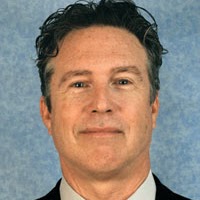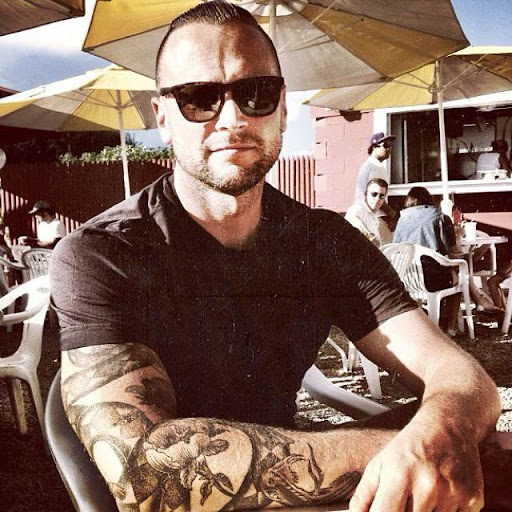David A Root
age ~59
from Waverly, NY
- Also known as:
-
- David L Root
- Dave L Root
- Phone and address:
-
32 N Chemung St, Waverly, NY 14892
(607)5652935
David Root Phones & Addresses
- 32 N Chemung St, Waverly, NY 14892 • (607)5652935
- Lockwood, NY
- Sayre, PA
- Buffalo, NY
- Vero Beach, FL
- Gillett, PA
- Athens, PA
License Records
David M Root
License #:
63.89.0224 - Active
Issued Date:
Dec 15, 2012
Expiration Date:
Dec 15, 2017
Type:
Ust Tank Installer
License #:
63.89.0224/1 - Active
David P Root
License #:
GF0802940 - Expired
Category:
Mechanical
Expiration Date:
May 31, 2014
Type:
Fuel Gas Service Technician
David B Root
License #:
RS116681A - Expired
Category:
Real Estate Commission
Type:
Real Estate Salesperson-Standard
David G Root
License #:
RS150778A - Expired
Category:
Real Estate Commission
Type:
Real Estate Salesperson-Standard
Us Patents
-
Redrawn Capillary Imaging Reservoir
view source -
US Patent:6350618, Feb 26, 2002
-
Filed:Apr 27, 1999
-
Appl. No.:09/300121
-
Inventors:Nicholas F. Borrelli - Elmira NY
Alain R. E. Carre - Le Chatelet-en-Brie, FR
Thierry L. A. Dannoux - Avon, FR
Bernard Eid - Corning NY
David Root - Lexington MA
Raja Rao Wusirika - Painted Post NY -
Assignee:Corning Incorporated - Corning NY
-
International Classification:G01N 100
-
US Classification:436174, 422100, 7386331, 73864, 436180
-
Abstract:Methods and apparatus for depositing a high density biological or chemical array onto a solid support. Specifically, the apparatus is made up of a plurality of open ended channels collectively forming a matrix. The matrix has been redrawn and cut such that the pitch of the channels on the loading end is larger than the pitch of the channels on the liquid delivery end. The upper portion of each channel serves as a reservoir, while the opposing end, which has been formed by the redrawing process, is diametrically sized such that liquid in the reservoir is retained by capillary pressure at the delivery end. At any point along the height of the capillary reservoir device, all cross-sectional dimensions and areas are uniformly reduced. In other words, the on-center orientation of any two channels, also referred to as the pitch between 2 channels, measured as a function of the diameter of any cross section, is constant throughout the structure. The liquid within the channels is either printed directly from the tool onto a substrate or transferred to a substrate by a typographical pin plate.
-
Sensor And Method For Detecting An Air Borne Or Exogenously Introduced Analyte
view source -
US Patent:6514402, Feb 4, 2003
-
Filed:Dec 6, 2000
-
Appl. No.:09/731423
-
Inventors:Narayan V. Iyer - Horseheads NY
William J. Lacey - North Andover MA
David M. Root - Westford MA -
Assignee:Corning Incorporated - Corning NY
-
International Classification:G01N 2731
-
US Classification:205793, 205789, 205778, 204416, 204431, 20440306
-
Abstract:The present invention includes a method and sensor that is easy to assemble and can operate to effectively detect an air borne or exogenously introduced analyte. In one embodiment, the assembled sensor includes a top cap capable of receiving a first electrolyte and a bottom cap capable of receiving a second electrolyte. The assembled sensor also includes a flexible boot that holds together the top cap, the bottom cap and a membrane. The membrane is located between the first electrolyte and the second electrolyte and enables an electrical device to detect an analyte (e. g. , hazardous chemical) which originally entered the sensor through a passage in the top cap and interacted with the membrane.
-
Redrawn Capillary Imaging Reservoir
view source -
US Patent:6596237, Jul 22, 2003
-
Filed:Apr 26, 1999
-
Appl. No.:09/299766
-
Inventors:Nicholas F. Borrelli - Elmira NY 14905
Alain R. E. Carre - 77820 Le Chatelet-En-Brie, FR
Thierry L. A. Dannoux - Avon, FR
Bernard Eid - Corning NY 14830
David Root - Lexington MA 02173
Raja Rao Wusirika - Painted Post NY 14870 -
International Classification:B01L 302
-
US Classification:422100, 436180, 7386331, 73864, 101327, 101335, 101368
-
Abstract:Methods and apparatus for depositing a high density biological or chemical array onto a solid support. Specifically, the apparatus is made up of a plurality of open ended channels collectively forming a matrix. The matrix has been redrawn and cut such that the pitch of the channels on the loading end is larger than the pitch of the channels on the liquid delivery end. The upper portion of each channel serves as a reservoir, while the opposing end, which has been formed by the redrawing process, is diametrically sized such that liquid in the reservoir is retained by capillary pressure at the delivery end. At any point along the height of the capillary reservoir device, all cross-sectional dimensions and areas are uniformly reduced. In other words, the on-center orientation of any two channels, also referred to as the pitch between 2 channels, measured as a function of the diameter of any cross section, is constant throughout the structure. The liquid within the channels is either printed directly from the tool onto a substrate or transferred to a substrate by a typographical pin plate.
-
Redrawn Capillary Imaging Reservoir
view source -
US Patent:6762061, Jul 13, 2004
-
Filed:Mar 15, 2000
-
Appl. No.:09/525919
-
Inventors:Nicholas F. Borrelli - Elmira NY
Alain R. E. Carre - Le Chatelet-en-Brie, FR
Thierry L. A. Dannoux - Avon, FR
Bernard Eid - Corning NY
David Root - Lexington MA
Raja Rao Wusirika - Painted Post NY -
Assignee:Corning Incorporated - Corning NY
-
International Classification:G01N 100
-
US Classification:436180, 436174, 422100, 422 99, 101 9337, 101368, 101327, 7386331, 7386401
-
Abstract:Methods and apparatus for depositing a high density biological or chemical array onto a solid support. Specifically, the apparatus is made up of a plurality of open ended channels collectively forming a matrix. The matrix has been redrawn and cut such that the pitch of the channels on the loading end is larger than the pitch of the channels on the liquid delivery end. The upper portion of each channel serves as a reservoir, while the opposing end, which has been formed by the redrawing process, is diametrically sized such that liquid in the reservoir is retained by capillary pressure at the delivery end. At any point along the height of the capillary reservoir device, all cross-sectional dimensions and areas are uniformly reduced. In other words, the on-center orientation of any two channels, also referred to as the pitch between 2 channels, measured as a function of the diameter of any cross section, is constant throughout the structure. The liquid within the channels is either printed directly from the tool onto a substrate or transferred to a substrate by a typographical pin plate.
-
Redrawn Capillary Imaging Reservoir
view source -
US Patent:6884626, Apr 26, 2005
-
Filed:Mar 15, 2000
-
Appl. No.:09/525920
-
Inventors:Nicholas F. Borrelli - Elmira NY, US
Alain R. E. Carre - Le Chatelet-en-Brie, FR
Thierry L. A. Dannoux - Avon, FR
Bernard Eid - Corning NY, US
David Root - Lexington MA, US
Raja Rao Wusirika - Painted Post NY, US -
Assignee:Corning Incorporated - Corning NY
-
International Classification:G01N001/16
G01N001/26
G01N001/00
G01N001/10
B01L003/02 -
US Classification:436180, 436174, 422100, 422 99, 422102, 7386331, 73864
-
Abstract:Methods and apparatus for depositing a high density biological or chemical array onto a solid support. Specifically, the apparatus is made up of a plurality of open ended channels collectively forming a matrix. The matrix has been redrawn and cut such that the pitch of the channels on the loading end is larger than the pitch of the channels on the liquid delivery end. The upper portion of each channel serves as a reservoir, while the opposing end, which has been formed by the redrawing process, is diametrically sized such that liquid in the reservoir is retained by capillary pressure at the delivery end. At any point along the height of the capillary reservoir device, all cross-sectional dimensions and areas are uniformly reduced. In other words, the on-center orientation of any two channels, also referred to as the pitch between 2 channels, measured as a function of the diameter of any cross section, is constant throughout the structure. The liquid within the channels is either printed directly from the tool onto a substrate or transferred to a substrate by a typographical pin plate.
Isbn (Books And Publications)

Medicine Doctors

David E. Root
view sourceSpecialties:
Occupational Medicine
Work:
Sacramento Occupational Medical Group
1550 Hbr Blvd STE 110, West Sacramento, CA 95691
(916)3729893 (phone), (916)3720630 (fax)
Sacramento Occupational Medical Group
5665 Power Inn Rd STE C120, Sacramento, CA 95824
(916)3876929 (phone), (916)3876977 (fax)
1550 Hbr Blvd STE 110, West Sacramento, CA 95691
(916)3729893 (phone), (916)3720630 (fax)
Sacramento Occupational Medical Group
5665 Power Inn Rd STE C120, Sacramento, CA 95824
(916)3876929 (phone), (916)3876977 (fax)
Education:
Medical School
Wake Forest University School of Medicine
Graduated: 1962
Wake Forest University School of Medicine
Graduated: 1962
Languages:
English
Spanish
Spanish
Description:
Dr. Root graduated from the Wake Forest University School of Medicine in 1962. He works in Sacramento, CA and 1 other location and specializes in Occupational Medicine.
Name / Title
Company / Classification
Phones & Addresses
Owner
Cumin & Copper Inc
Eating Place Drinking Place
Eating Place Drinking Place
4914 Lk Shr Rd, Hamburg, NY 14075
(716)6275551
(716)6275551
DB ROOT CONSULTING, LLC
GENX TESTING, INC
Managing
KREHER ENTERPRISES, LLC
Crop Harvesting Services Mfg Nitrogenous Fertlizr Mfg Fertilizer Farm Labor Contractors
Crop Harvesting Services Mfg Nitrogenous Fertlizr Mfg Fertilizer Farm Labor Contractors
5411 Davison Rd, Clarence, NY 14031
PO Box 410, Clarence, NY 14031
PO Box 410, Clarence, NY 14031
Manager, ManagingMbr
KREHER'S SUNRISE FARM, LLC
Chicken Egg Farm Mfg Nitrogenous Fertilizers
Chicken Egg Farm Mfg Nitrogenous Fertilizers
5411 Davison Rd, Clarence, NY 14031
PO Box 410, Clarence, NY 14031
PO Box 410, Clarence, NY 14031
Manager
VILLAGE BOAT AND MINI STORAGE, LLC
Plaxo

David Root
view sourceNew York, NY

David Root
view sourcePresident at Sac Physicians Medical Group Manageme...

David Root
view sourceRetired

David Root
view sourceLongmont, CO

David Root
view sourcePioneer painting Remodeling
Classmates

David Root
view sourceSchools:
Middletown Area High School Middletown PA 1971-1975
Community:
Tina Wilken, Ann Wert, Owen Hannah

David Root
view sourceSchools:
Nescopeck High School Nescopeck PA 1951-1955
Community:
Ann Shepherd, Kathleen Penles, Norman Foster

David Root
view sourceSchools:
Spencerville High School Spencerville OH 1995-1999
Community:
Cindy Potts, Trenton Battle, James Beckett, Mary Bart

David Root
view sourceSchools:
Moshannon Valley High School Houtzdale PA 1972-1976
Community:
Chester Haywood

David Root
view sourceSchools:
Ascension Academy Alexandria VA 1964-1968
Community:
Billy Mcgill, Wendy Hill

David Root
view sourceSchools:
Montpelier High School Montpelier VT 1967-1971
Community:
Gary Macpherson, Frank Shirley

David Root
view sourceSchools:
Glorietta Elementary School Orinda CA 1961-1968, Inland Valley School Orinda CA 1968-1970
Community:
Debra Hartman, Sondra Mcvay

David Root
view source
David G Root
view source
David Fowler Root
view source
David J Root
view source
Bradley David Root
view source
Darren David Root
view source
David A. Root
view source
David G. Root
view sourceMylife
Youtube
Myspace
Flickr
Googleplus

David Root
Work:
Cases2Go - President (1982)
Professional Packing & Crating - Owner (1983-2000)
Professional Packing & Crating - Owner (1983-2000)
Education:
University of South Florida - MBA, Business Administration
About:
Founder and owner of Root International, Inc. dba Cases2Go. My career in the packaging industry began in 1982 with the founding of Professional Packaging & Crating, providing export and military ...

David Root
About:
RootRocks is a unique solo music act boasting a full live rock and blues band sound. Featuring popular music from the Fifties, Sixties, Seventies and Eighties, RootRocks live guitar and vocals perfor...
Tagline:
RootRocks - Full live rock 'n roll band sound in a solo act

David Root

David Root

David Root

David Root

David Root

David Root
Get Report for David A Root from Waverly, NY, age ~59













